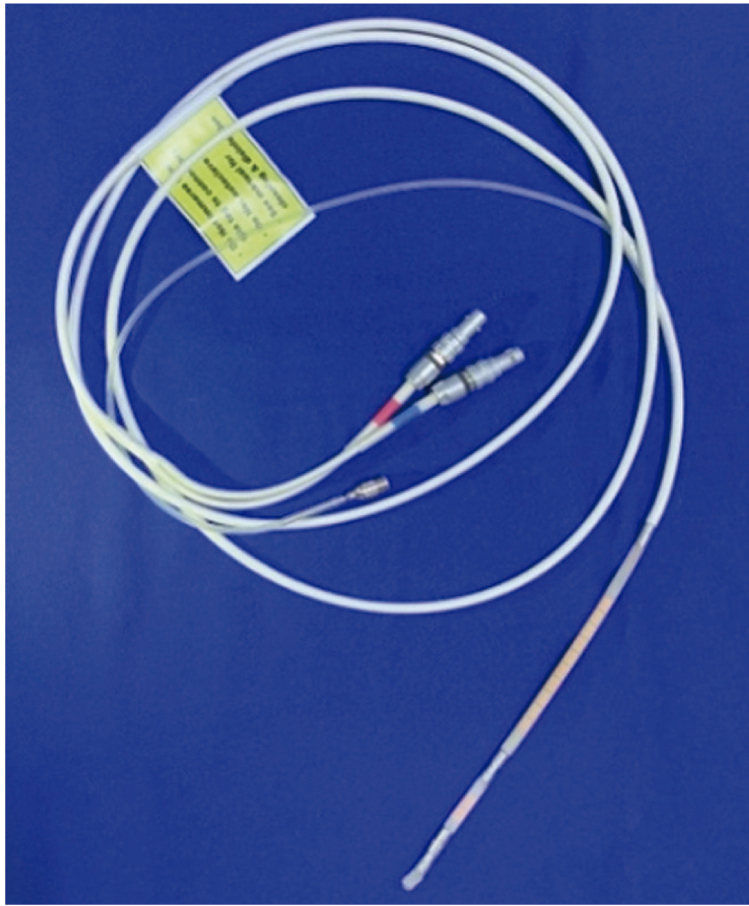How to perform and interpret high resolution anorectal manometry
DOI:
https://doi.org/10.22516/25007440.411Keywords:
high resolution anorectal manometry, dyssynergic defecation, fecal incontinenceAbstract
Anorectal manometry is the most commonly used technique to evaluate anorectal functioning and coordination and detect functional abnormalities of the anal sphincter. In our physiology laboratory we perform approximately 15 high resolution anorectal manometry studies each week. We consider that proper performance and correct interpretation are vitally important. We want to share our high resolution anorectal manometry protocol based on the most relevant literature through this article.
Downloads
References
Zhao Y, Ren X, Qiao W, Dong L, He S, Yin Y. High-resolution anorectal manometry in the diagnosis of functional defecation disorder in patients with functional constipation: a retrospective cohort study. J Neurogastroenterol Motil. 2019;25(2):250-7. doi: https://doi.org/10.5056/jnm18032.
Carrington E, Scott M, Bharucha A, Mion F, Remes-Troche J, Malcolm A, et al. Expert consensus document: advances in the evaluation of anorectal function. Nature Rev Gastroenterol Hepatol. 2018;15:309-22. doi: https://doi.org/10.1038/nrgastro.2018.27.
Rao S, Bharucha A, Chiarioni G, Felt-Bersma R, Knowles C, Malcolm A, et al. Anorectal disorders. Gastroenterology. 2016;150:1430-42. doi: https://doi.org/10.1053/j.gastro.2016.02.009.
Tetangco E, Yan Y, Rao S. Performing and analyzing high-resolution anorectal manometry. NeuroGastroLatam Reviews Rev. 2018;2:1-13. doi: https://doi.org/10.24875/NGL.19000016.
Oblizajek N, Gandhi S, Sharma M, Chakrabortv S, Muthyala A, Prichard D, et al. Anorectal pressures measured with high‐resolution manometry in healthy people-Normal values and asymptomatic pelvic floor dysfunction. Neurogastroenterol Motil. 2019;e13597. doi: https://doi.org/10.1111/nmo.13597.
Brochard C, Vénara A, Bodère A, Ropert A, Bouguen G, Siproudhis L. Pathophysiology of fecal incontinence in obese patients: a prospective case-matched study of 201 patients. Neurogastroenterol Motil. 2017;00:e13051. doi: https://doi.org/10.1111/nmo.13051.
Ellington D, Polin M, Szychowski J, Deng L, Richter H. The effect of obesity on fecal incontinence symptom distress, quality of life, and diagnostic testing measures in women. Int Urogynecology J. 2013;24:1733-8. doi: https://10.1007/s00192-013-2103-1.
Otto S, Clewing J, Gröne J, Buhr H, Kroesen A. Repeatability of anorectal manometry in healthy volunteers and patients. J Surg Res. 2013;185(2):e85-92. doi: http://dx.doi.org/10.1016/j.jss.2013.06.008.
Rogers J, Laurberg S, Misiewicz J. Anorectal physiology validated: a repeatability study of the motor and sensory tests of anorectal function. Br J Surg. 1989;76:607. doi: https://doi.org/10.1002/bjs.1800760628.
Ryhammer A, Laurberg S, Hermann A. Test-retest repeatability of anorectal physiology tests in healthy volunteers. Dis Colon Rectum. 1997;40:287-92. doi: https://doi.org/10.1007/BF02050417 .
Association of Gastrointestinal Physiologists. Agreed AGIP Guidelines for High-Resolution Anorectal Manometry (HR-ARM). 2017.
Seo M, Joo S, Jung KW, Song EM, Rao SSC, Myung SJ. New metrics in high-resolution and high-definition anorectal manometry. Curr Gastroenterol Rep. 2018;20(12):57. doi: https://doi.org/10.1007/s11894-018-0662-5.
Tae L, Bharucha A. How to perform and interpret a high-resolution anorectal manometry test. J Neurogastroenterol Motil. 2016;22(1):46-59. doi: http://dx.doi.org/10.5056/jnm15168.
Carrington E, Heinrich H, Knowles C, Rao S, Fox M, Scott S, et al. Methods of anorectal manometry vary widely in clinical practice: results from an international survey. Neurogastroenterol Motil. 2017;29(8):e13016. doi: 10.1111/nmo.13016.

Downloads
Published
How to Cite
Issue
Section
License
Aquellos autores/as que tengan publicaciones con esta revista, aceptan los términos siguientes:
Los autores/as ceden sus derechos de autor y garantizarán a la revista el derecho de primera publicación de su obra, el cuál estará simultáneamente sujeto a la Licencia de reconocimiento de Creative Commons que permite a terceros compartir la obra siempre que se indique su autor y su primera publicación en esta revista.
Los contenidos están protegidos bajo una licencia de Creative Commons Reconocimiento-NoComercial-SinObraDerivada 4.0 Internacional.



















